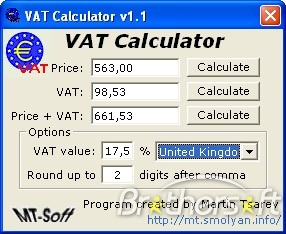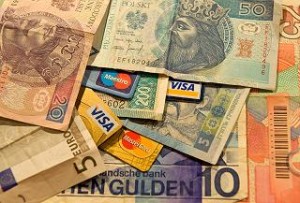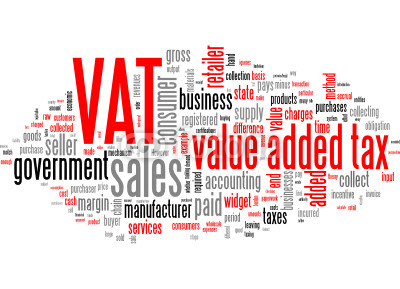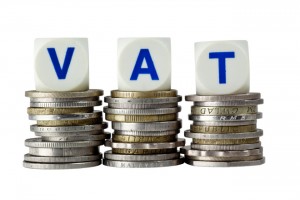In this blog post, Suhani Chanchlani of Amity Law School, Delhi, analyses the indirect tax regime on goods as prevailing under Value Added Tax. Before you proceed to understand Goods and Services Tax, it is important to understand the aspects of present taxation regime that GST Bill seeks to replace. The rationale behind VAT, its merits and demerits would also be examined.
What is VAT?
Value Added Tax is an indirect tax that is levied at each stage of value addition of production or distribution chain. Although it is levied from producers, it`s final burden rests on consumers. VAT constitutes a major source of revenue for different states and union territories. However, the Department of Revenue under the Ministry of Finance facilitates the implementation of VAT.
Why was VAT Introduced?
In the previous taxation system, goods were taxed a multiple number of times. For instance, a manufacturer on purchasing inputs would also pay taxes on those inputs. The distributor buying goods from a manufacturer would pay the price of the output of the manufacturer that is inclusive of taxes paid by the manufacturer as well as pay additional taxes on the output of the manufacturer.
The consumer, on the other on his purchase of a good from the distributor would pay a price that is inclusive of the price of the output of the distributor which is again inclusive of taxes paid by the manufacturer and himself. Oh! Don`t forget the additional taxes that the consumer would pay the price of a good! As and when you would proceed further in the value addition chain, the next producer would be obligated to pay higher and higher taxes. And the burden of all this would ultimately lie on the consumer. To make matters worse, some states even levied taxes related to sales such as turnover tax, a surcharge on sales tax and additional surcharge. It wasn`t too bright for the revenue authorities too. Tax evasion for the taxes mentioned above was common. Moreover, it was not too easy to catch hold of defaulters.
VAT was thus, introduced to rationalize the taxation regime of indirect taxes. Taxes such as turnover taxes, a surcharge on sales tax, additional surcharge and Special Additional Tax were abolished while it was decided to phase out Central Sales Tax.
How does VAT Work?
When a producer buys an input, he will pay a price for it that is inclusive of taxes. However, he would get a set-off or input tax credit on the purchase of inputs whereas his output would be taxed. Input tax credit means setting off or canceling of taxes paid on inputs as against the taxes paid on output. VAT is thus, the difference between the taxes paid on outputs and the tax credit received on inputs in a particular period. In case, the tax credit received is greater than the taxes on output; then the tax credit can be carried on to the next financial year. Moreover, this input tax would be given to both traders and manufacturers, irrespective of the state where they would sell their output or the period when they would sell or utilize the input.
For exports, the taxes paid within the State would be refunded within three months. Under this scheme, however, taxes paid on inputs procured from other states or stock transfer would not be credited. This payment of inter-state taxes is proposed to be phased out soon. All producers (manufacturers, wholesalers, distributors, retailers and the like) who have a turnover or sales exceeding a prescribed amount (this amount is set at different values by different states) are liable to pay VAT. 
It is pertinent to note that documentation of invoices, bills or cash memos is necessary. All those who are liable to pay VAT are ordained to issue tax invoices to purchasers of their products, having all the prescribed specifications.
Moreover, small dealers whose annual gross turnover does not exceed Rs. 50 Lakhs and are otherwise liable to pay VAT, have an option of either paying VAT or opting for the composition scheme. Under the composition scheme, the producers would be liable to pay taxes which would be equivalent to a small percentage of their gross turnover. After opting the composition scheme, the producer would not be able to avail any input tax credit.
VAT Rates and Classification of Commodities
Despite the fact that the method of classification of goods for the purpose of imposition of differential rate of VAT differs from state to state, the following classification substantially applies to most of the states:-
Goods exempted from VAT: – These include commodities that are of social importance and also those on which taxation is barred by the law. Some of these commodities are khadi, salt, condoms and aids used by differently abled. Many states have also included unprocessed goods sold in natural form by the unorganized sector.
1%: – This special VAT rate only applies to precious metals such as platinum, silver and gold in some of the states.
4-5% of VAT is imposed on items of daily usage that are necessary for basic living such as oil, medicines, certain capital goods and some agricultural and industrial inputs.
General VAT rate i.e. 12.5% is imposed on goods such as liquor and cigarette that does not fall under any of the above-mentioned categories.
Merits of VAT
- It contains tax evasion: – Since; it would not be possible for producers to claim input tax credit without presenting proper invoices of inputs purchased; they would be obligated to maintain proper records of their purchases. Also, the input tax credit would only be set off against taxes on outputs. Thus, a producer is less likely to suppress the record of his purchases as he would not get input tax credit then. He is also less likely to suppress the taxes he paid on his outputs as that would reduce the record of his sales or turnover.

- It keeps the prices in check: – VAT rectified the scourge of double taxation. Under the earlier taxation system, the producers that were located lower in the production chain had to pay higher taxes and the consumers ultimately borne the brunt. As a result, prices of those goods that involved more people in the production chain were higher than those goods that involved a relatively lesser number of people. VAT thus, has also rationalized the pricing mechanisms of goods. The price is now no longer dependent on the number of people involved in a production chain.
- It is transparent: – Proper maintenance of invoices alone would allow a producer to claim input tax credit. Because of this requirement, the buyers are presented with invoices from which they get to know what portion of the money that they paid is taxed and on what other basis is a producer charging them.
- A collection of taxes is easier: – The practice of maintenance of tax invoices, proper documentation of purchases and sales, makes it all the easier for the revenue department to collect taxes. Moreover, there would be no need for compulsory assessment at the end of each year. This has reduced the administration of costs of procuring taxes.
Demerits of VAT
- VAT does not ensure full-proof measures against tax evasion. When there are differential rates of VAT, exempted category of goods and schemes like composition schemes, tax evasion cannot be weeded out completed as these measures all for way around.
- As VAT applies by laws and rules formulated within different states, it only ensures against the cascading effect of taxation if goods are sold and purchased within the states. Input tax credit is not provided for goods purchased from outside a particular state.
- Unlike sales tax where taxes are imposed at the last stage of consumption, VAT is levied at every stage of the production chain. This increases the administration cost as the revenue authorities would have to collect taxes from each and every producer.
Concluding Remarks
VAT rectified many of the shortcomings of the previous tax regime. However, it is not without its limitations. Indirect taxation has to be more rationalized to make way for a common domestic market, competitive prices and elimination of cascading effect of taxes. To achieve this, the government has proposed Goods and Services Tax under which all the indirect taxes including VAT would be subsumed under one head.
 Serato DJ Crack 2025Serato DJ PRO Crack
Serato DJ Crack 2025Serato DJ PRO Crack











 Allow notifications
Allow notifications



Very informative post for the beginners. Good efforts.